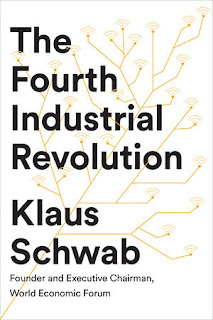The prerequisite for visioning India as a developed nation (viksit bharat) by 2047 is self-reliance or AatmaNirbharta. India is moving ahead with speed, in scale and size. It took us sixty years past independence to become USD1 Trillion economy whereas next one and a half decade witnessed three-fold increase. It was the mid of 2020 when the Prime Minister of India, Narendra Modi, provided an impetus for AtmaNirbhar Bharat. It was this timely realisation and focus that led him to further extend it for a greater mission – ViksitBharat by 2047 (marking a century of Indian independence).The challenge before all of us is how do we become self-reliant in a sustainable way that we are able to cherish the fruits for all times to come.
With this context in mind, I read this book titled – Aatmanirbhar: a swadeshi paradigm, edited by Professor Ashwani Mahajan. It is an insightful volume providing different viewpoints on the whole idea of self-reliance from the perspective of swadeshi bharat. The core of our growth lies in solving our problems with our resources or finding match between available resources, potential, and application. Moving from reliance to self-reliance, or nirbharta to aatmanirbharta, is the key to sustainable development within and beyond defined frames.
This book has 18 chapters authored by intelligent thinkers of contemporary India whose voice matters. The editor deserves appreciation for being able to rope in experts from academics, policy making, and industry to share their perspective on Aatmnirbhar Bharat through their prudent contribution.
The foreword is written by Dr Mohan Bhagwat (Sarsanghchalak, Rashtriya Swayamsevak Sangh), building context around four purusharthas and beyond western belief of materialism and consumerism. The contributors include V A Nageswaran (Chief Economic Advisor to the Government of India), Bibek Debroy (Chairman, Economic Advisory Council to the Prime Minister of India), N K Singh (Chairman, 15th Finance Commission, Government of India), A K Lahiri (Former Chief Economic Advisor, Government of India), Sanjeev Sanyal (Member, Economic Advisory Council to the PM), apart from industry experts like Sanjeev Puri (Chairman and MD, ITC), Sridhar Vembu (CEO, Zoho Corpn), and Gopal Srinivasan (CEO, TVS Capital).
The experience of reading this book was enriching and sagacious, traveling through the villages, wage-led growth, industrial growth, food security, and international trade. The mix of macro and micro; problem and policy; trade and technology are brilliantly interwoven through the volume.
Sachin Chaturvedi mentions –
One element that Gandhi emphasized and that is still relevant today is ethics in economic development. Indian development and particularly swadeshi ethos should nurture this, going beyond corporate social responsibility. At the same time, it needs to be ensured – as emphasized by PM Narendra Modi – that there is sustainable consumption of production with minimum carbon footprint. (p 17).The manufacturing sector’s growth is visible in many sectors that are propelling economic growth as well as creating employment opportunities. The issues concerning food security, energy deficit, and self-reliant defence sector have been excellently discussed by Shamika Ravi. The initiative of the government to boost industrial growth through production linked incentives (PLI) find mention by few authors and I am sure that this scheme shall be one of the important engines of growth helping industry and employment through building appropriate competencies.
Sanjay Baru (former media advisor and chief spokesperson during PM Manmohan Singh) opines on the idea of Aatmnirbharta through tracing its root in Indian thinking and appreciates focus on manufacturing sector (Make in India) apart from highlighting impact of geo-political conditions on economic growth. Abhijit Das’s paper emphasizing on international trade across sectors and industries warns the policy makers for carrying out an in-depth assessment as well as to have proper preparedness for facing ensuing scenario after FTAs (wrt Canada, EU, and the UK).
The idea of reliance or dependence makes us weak and enthuses a sense of insecurity and inferiority complex. Our historical contribution in the world trade is not unknown to the contemporary policy makers. Last few centuries weakened us both economically and socially that effectuated our dependence on the other part of the globe disturbing balance of trade vis-à-vis balance of payment.
We also need to build ecosystem that focuses on ease of doing farming (p 25) that shall sustain industrial value chain and build us from within to be Aatmnirbhar. Though the governments have been initiating policies to improve economic conditions, yet we never had any political leader who could push us to dream for a developed India through becoming self-reliant.
One would have to go through this book to dive deeper into the thought of aatmanirbhar (self-reliance) Bharat, priority areas for required policy framework, and to explore the pathways to developed India (viksit bharat). I recommend this book to all interested in seeing India becoming self-reliant and an economic power. We have transitioned from fragile five to first five. Apart from being the largest economy we need to focus on reducing inequalities and improving human well-being that should increase per capita income.
I am sure India shall regain its past and lost glory when all of us put forth our efforts in the direction of Viksit Bharat and by the time we celebrate 100 years of India’s independence, we shall stand tall, firm, and humble.








